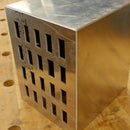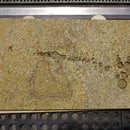Introduction: Custom Boom Mic for a Hot Tub Podcast
Recently, my best friend from high school and I decided to start a new podcast called "Hot Tubcast" — where the audio recording takes place entirely in the hot tub. Each episode will feature a guest interviewee who will join us in the tub. The idea is that in the 101-degree waters, our minds will open and conversation will flow.
The theme of the podcast is Uncertainty. Every episode will explore some facet of this broad topic: gambling and chance to fear of death to the world of physics such as The Heisenberg Uncertainty Principle. We just recorded one episode, which I'm still editing.
The first technical challenge was how to make a decent-quality audio recording. We needed to find a way to situate a shotgun mic over the hot tub and capture our conversation while being comfortable in the waters.
The jets will always be off during the recording. Eventually, we might replicate this setup for multiple microphones and a better-quality sound mix
By the way, the episodes aren't available for download yet, but we do have a Twitter account: @hottubcast. We will update you with episode downloads as they become available.
The theme of the podcast is Uncertainty. Every episode will explore some facet of this broad topic: gambling and chance to fear of death to the world of physics such as The Heisenberg Uncertainty Principle. We just recorded one episode, which I'm still editing.
The first technical challenge was how to make a decent-quality audio recording. We needed to find a way to situate a shotgun mic over the hot tub and capture our conversation while being comfortable in the waters.
The jets will always be off during the recording. Eventually, we might replicate this setup for multiple microphones and a better-quality sound mix
By the way, the episodes aren't available for download yet, but we do have a Twitter account: @hottubcast. We will update you with episode downloads as they become available.
Step 1: Get Your Audio Recording Gear
This is the audio gear that I own, which I've used for numerous other art projects. It includes the recorder itself, a microphone, XLR cables and adapters, plus a shockmount for the microphone.
Step 2: Gather the Rest of the Parts
The other components we used for this project are a cheap tripod, threaded rod, a small bolt that fits the rod, zip ties, snippers for the zip ties and some ankle weights for securing the tripod.
Step 3: Attach Shockmount to the Threaded Rod
The shockmount is essential and there are many varieties to choose from. Just Google "Shock Mount Microphone" and find one that you like — they are about $30. The microphone goes between the rubber bands so that the mount holds the mic securely and prevents noise of the microphone body vibrating against solid material and causing interfering audio noise.
We chose a shockmount that has a threaded female joint. Then we went to the hardware store with the shockmount in hand and found a threaded rod that fit it.
Additionally, we used a bolt that serves as a standoff. We screwed the shockmount to the threaded rod, then hand-tightened the bolt to prevent it from slipping.
We chose a shockmount that has a threaded female joint. Then we went to the hardware store with the shockmount in hand and found a threaded rod that fit it.
Additionally, we used a bolt that serves as a standoff. We screwed the shockmount to the threaded rod, then hand-tightened the bolt to prevent it from slipping.
Step 4: Weight Down the Outside Foot
In case there is a gust of wind, we didn't want the tripod to fall in the water and wreck the microphone.
We put the tripod over the hot tub and weighted down the outside leg. Professionals use sandbags for this, but we repurposed two five-pound ankle weights.
We put the tripod over the hot tub and weighted down the outside leg. Professionals use sandbags for this, but we repurposed two five-pound ankle weights.
Step 5: Zip-tie the Threaded Rod to the Handle
We attached a couple zip ties to secure the threaded rod to the handle of the tripod. The extended tripod handle now served as the boom mic.
Step 6: Assemble the Audio Gear
Now that the hardware was ready, we put the microphone through the shockmount, and ran the cables. We put the audio recorder on a bench, out of the way of any water splashing.
We could loosen, position and tighten the tripod to position the microphone just where we wanted it.
Podcast-ready!
Once again, the Twitter account — stay tuned for podcast episodes in the following months — is @hottubcast
We could loosen, position and tighten the tripod to position the microphone just where we wanted it.
Podcast-ready!
Once again, the Twitter account — stay tuned for podcast episodes in the following months — is @hottubcast











